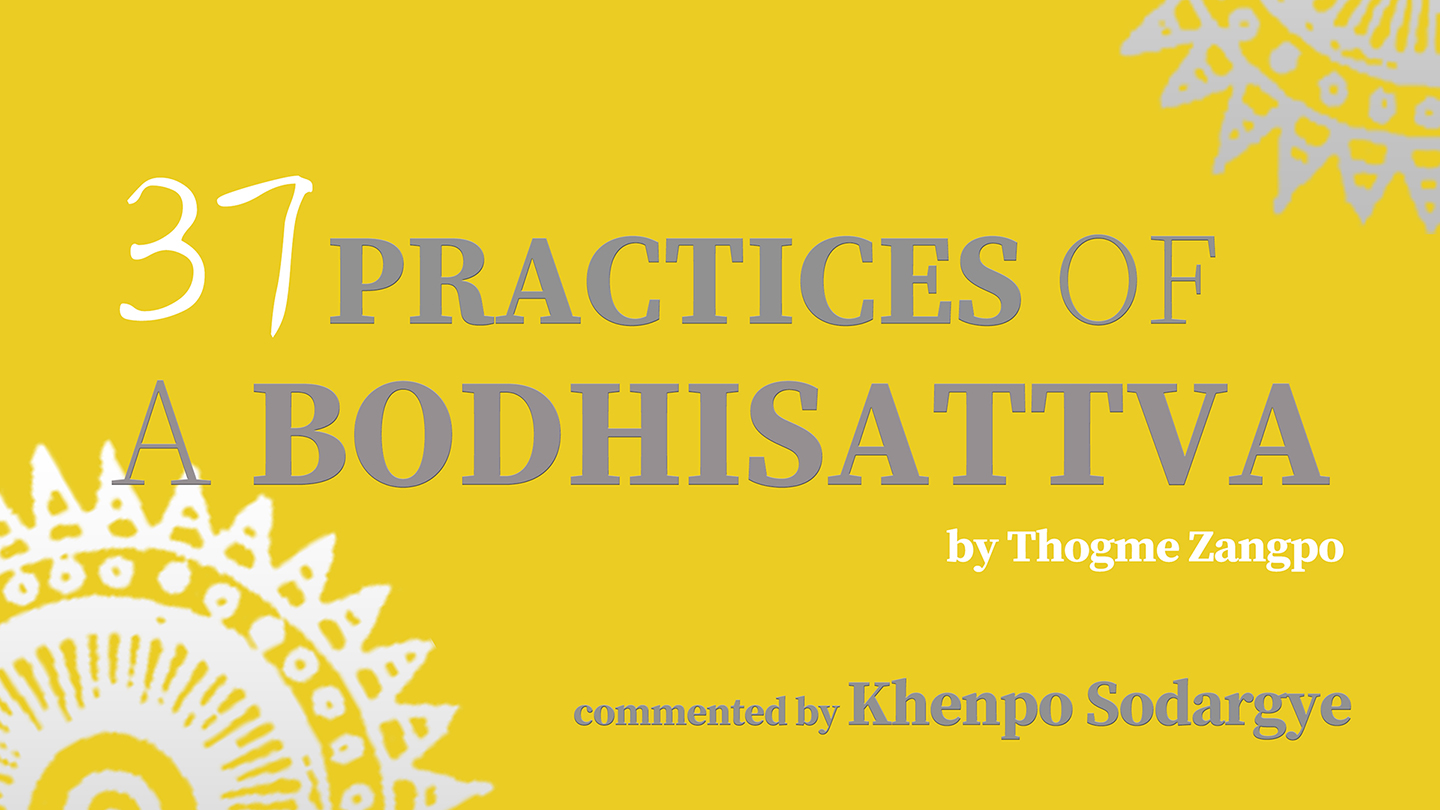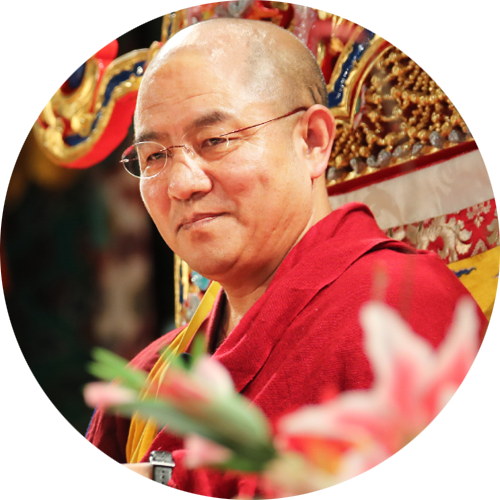Thogme Zangpo summarized the vast number of bodhisattva practices into a practicable thirty-seven, in order to benefit those who have entered the Mahayana path and wish to train in it. Thus, he has made the practices easily applicable to everyone.
The Thirty-Seven Practices of a Bodhisattva
The Thirty-Seven Practices of a Bodhisattva, composed by the renowned Tibetan master, Thogme Zangpo, is a great treatise that summarizes the entire bodhisattva path and provides excellent pith instructions for Mahayana practice. This text is not only popular in all schools of Tibetan Buddhism, but is also studied and practiced by countless Buddhists from different parts of the world.
His Holiness Jigme Phuntsok Rinpoche held this teaching in high esteem, having received it himself from different masters over 150 times. His Holiness frequently taught this text at Larung Gar and also when he visited monasteries or Dharma centers in various places. Depending on the time available, His Holiness would sometimes present the teaching in great detail and at other times very concisely, sometimes giving only the oral transmission. Often acting as His Holiness’ attendant and translator, Khenpo Sodargye received this teaching, including the oral transmission, more than 100 times from His Holiness Jigme Phuntsok Rinpoche.
It is also this very text that created an auspicious condition for Khenpo Rinpoche’s Dharma activities in the Han regions of China. At the request of His Holiness Jigme Phuntsok Rinpoche, Khenpo Sodargye translated this treatise into Chinese and gave teachings to Han Chinese Buddhists during their visit to Mount Wutai in 1987. Since that time, Khenpo Rinpoche’s Dharma activities have been profoundly vast and successful.
This treatise categorizes all of the practices of the Buddhist path into those of lesser, middling, and great beings, in successive order. This works as a practical guide for following the path of the bodhisattvas, verse by verse. As a training manual, this treatise enables bodhichitta to increase naturally and become stronger in our minds after we completely understand it. Even if one doesn’t understand its real meaning, just by hearing the verses word by word, one’s compassion and loving-kindness will naturally increase.
In this commentary, Khenpo Rinpoche gives a precise explanation of the practices in a systematic way. Accordingly, this will help practitioners who are determined to incorporate these practices into everyday life and traverse the bodhisattva path, in developing stability in their understanding and practice.

Narrowly speaking, those who have attained enlightenment from the first bhumi to tenth bhumi are called bodhisattvas. Broadly speaking, as long as one generates bodhicitta in one’s mind, this person can be called a bodhisattva from that very moment. From then onward they are a merit field, worthy of offerings and respect by gods and humankind.


When there is the conception of “I”, there are also “others”, and from “I” and “others”, clinging to self and aversion toward others will arise. From there all negative thoughts or emotions, speeches and actions are produced, and furthermore, there are endless struggles, conflicts and sufferings. That’s exactly how the entirety of samsara manifests.

Resources
Once when Thogme Zangpo was seriously ill, one of his disciples asked him to give a final teaching as his testament. He replied, “I don’t have anything further to say, and my teachings such as The Thirty-Seven Practices of a Bodhisattva are sufficient as my last words.”
